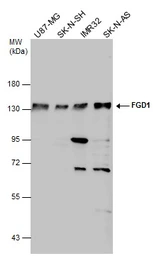FGD1 antibody
Cat. No. GTX114404
Cat. No. GTX114404
-
HostRabbit
-
ClonalityPolyclonal
-
IsotypeIgG
-
ApplicationsWB
-
ReactivityHuman
